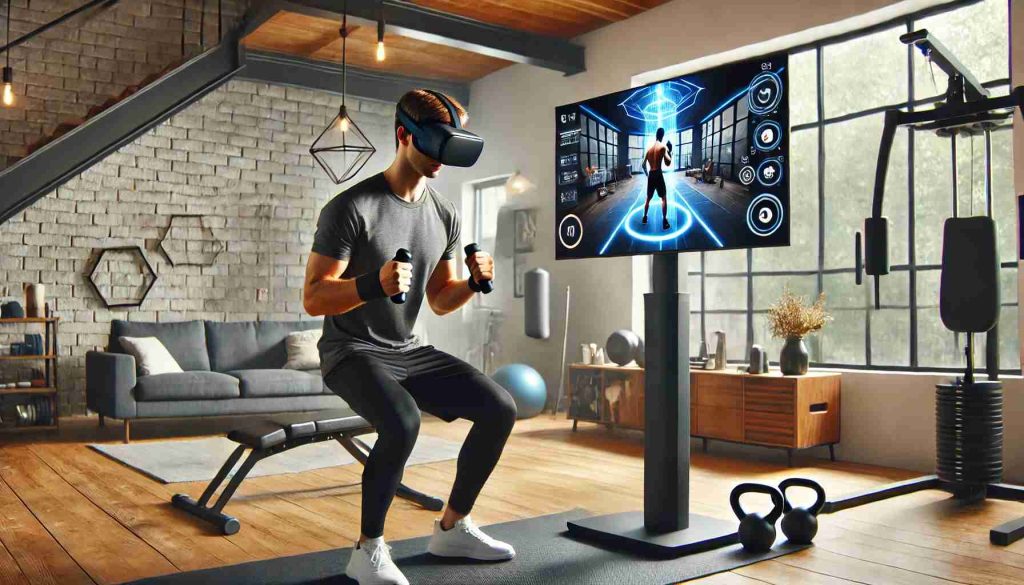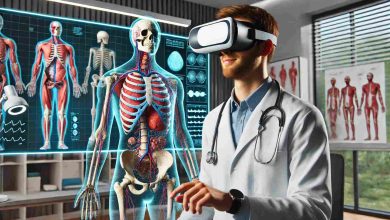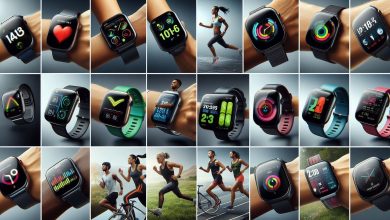How Virtual Reality (VR) is Revolutionizing Fitness: The Future of Exercise
How Virtual Reality (VR) is Revolutionizing Fitness
Virtual Reality (VR) technology has experienced tremendous growth over the last decade, expanding its applications from gaming to education, medicine, and fitness. One of the most exciting and transformative areas in which VR is making waves is in the fitness industry. Fitness enthusiasts and professionals alike are discovering how VR can enhance exercise routines, making them more immersive, engaging, and effective. From virtual workouts and interactive training environments to personalized fitness experiences, VR is truly revolutionizing the way people approach health and wellness.
The Emergence of Virtual Reality in Fitness
In the past, fitness was primarily confined to physical spaces, such as gyms, outdoor areas, or home workout routines. However, the introduction of VR into fitness is transforming the landscape by allowing users to engage in exercise from anywhere in the world, without the need for traditional equipment or crowded fitness centers.
VR fitness began with simple, gamified experiences such as rhythm-based exercises or games that required movement. These early VR experiences focused on making exercise fun, allowing people to lose themselves in digital worlds while also working out. Over time, the technology has become more sophisticated, allowing for realistic simulations of workouts and offering interactive coaching and feedback.
As VR technology continues to evolve, so too does its potential to reshape the fitness industry. VR now offers a more personalized, accessible, and engaging way for people to achieve their fitness goals. This article will explore how VR is revolutionizing fitness, highlighting its key benefits, innovative applications, and the potential future of this technology in health and wellness.
The Key Benefits of VR in Fitness
-
Enhanced Engagement and Motivation
One of the primary challenges in traditional fitness is maintaining motivation. Many people struggle to stick with their workout routines due to boredom or lack of engagement. This is where VR technology excels. By immersing users in dynamic, interactive environments, VR transforms exercise from a mundane task into an exciting adventure.
Whether users are cycling through scenic mountain trails, boxing in a virtual ring, or dancing to the beat of their favorite music in a rhythm game, VR provides a level of engagement that traditional fitness regimens often lack. This enhanced level of involvement encourages users to work harder, push themselves further, and stay committed to their fitness journey. The element of fun and gamification makes it easier to stay consistent with exercise routines, helping people stick to their goals.
-
Variety of Workouts and Training Programs
Another major advantage of VR in fitness is the variety of workouts it offers. Traditional fitness routines can become monotonous after a while, especially when the same exercises are repeated day in and day out. VR, on the other hand, provides a wide range of workout options that cater to different fitness levels, preferences, and goals.
VR fitness platforms offer diverse programs, such as high-intensity interval training (HIIT), strength training, yoga, meditation, and even adventure-based fitness challenges. These programs are designed to suit various fitness levels, whether a beginner or an experienced athlete. Additionally, VR can simulate outdoor activities like cycling, hiking, and running, allowing users to explore new environments without leaving their homes.
With VR, users can access an entire library of workouts at their fingertips, eliminating the need for pricey gym memberships or specialized equipment. This versatility opens up fitness to a much broader audience, giving people the ability to find and enjoy the types of workouts that work best for them.
-
Personalized Fitness Coaching
One of the most exciting developments in VR fitness is the ability to provide personalized coaching and real-time feedback. Through VR platforms, users can access virtual trainers who guide them through workouts, provide encouragement, and correct their form.
These virtual trainers use motion tracking technology to monitor users’ movements, ensuring that exercises are performed correctly. The VR system can also adjust the intensity of a workout based on the user’s performance, increasing or decreasing the challenge to maintain optimal levels of effort. This personalized approach helps users avoid injury, improve their performance, and achieve better results.
Additionally, some VR fitness apps use AI and machine learning algorithms to analyze a user’s workout history and progress, providing tailored recommendations for future sessions. This level of personalization helps users stay on track with their fitness goals and ensures that each workout is challenging yet achievable.
-
Accessibility and Convenience
One of the most significant barriers to fitness is accessibility. Not everyone has access to a gym or personal trainer, and for some, even basic exercise equipment can be too expensive or impractical. VR solves this problem by providing a virtual fitness studio that anyone with a VR headset can access.
With VR, users can work out at home, in a park, or anywhere they choose. They don’t need to worry about travel time, busy gym schedules, or equipment costs. Whether users are performing a yoga session in their living room or training for a marathon on a virtual track, VR makes fitness accessible to everyone, regardless of location or financial situation.
This convenience also extends to the wide range of VR fitness platforms available. Many of these platforms offer free or low-cost subscriptions, enabling users to access top-quality fitness programs without the need for a hefty gym membership fee or expensive personal training sessions.
Innovative Applications of VR in Fitness
-
Virtual Fitness Classes
As VR technology continues to improve, many fitness brands and platforms have begun offering virtual fitness classes, which replicate the experience of attending a traditional fitness class—without leaving home. Users can join live or pre-recorded VR classes led by expert trainers, participating in everything from cardio and strength training to Pilates and yoga.
These virtual fitness classes offer the same level of interactivity as in-person sessions, allowing users to follow along with an instructor, receive feedback, and interact with other participants. Additionally, VR fitness classes often feature gamified elements, such as leaderboards, badges, and challenges, adding a competitive edge that motivates users to push themselves.
-
Virtual Reality Gaming for Fitness
Virtual reality fitness gaming has become one of the most popular applications of VR in fitness. Games like Beat Saber, BoxVR, and The Thrill of the Fight combine entertainment with exercise, allowing users to burn calories while having fun. These games require players to move, dodge, and hit objects in virtual environments, providing a full-body workout.
Because these games are designed to be engaging and immersive, users often lose track of time while playing, which makes the workout feel less like exercise and more like a fun activity. As VR gaming continues to grow, developers are likely to create even more innovative and physically demanding games that help users stay active and healthy.
-
Sports Simulations and Virtual Training
For athletes and fitness enthusiasts who want to enhance their sports performance, VR offers specialized simulations and training environments. Whether it’s improving your golf swing, refining your basketball skills, or practicing your tennis serve, VR sports training provides a dynamic, risk-free environment to hone techniques.
By immersing users in simulated environments, VR can help improve muscle memory, reaction times, and overall performance. Some VR platforms also offer personalized coaching for specific sports, providing real-time feedback and insights into areas that need improvement.
The Future of VR Fitness
As VR technology continues to evolve, the future of fitness looks incredibly promising. With the potential for enhanced realism, improved motion tracking, and even more immersive environments, VR has the ability to take fitness to new heights. Future innovations could include multi-user fitness experiences, where friends or trainers can work out together in the same virtual space, and more advanced biometric tracking to monitor health metrics in real time.
The integration of VR with other emerging technologies, such as artificial intelligence and wearable devices, will further enhance the personalization of workouts and provide users with more detailed insights into their fitness progress.
Conclusion
Virtual Reality is rapidly transforming the fitness industry, offering users new ways to engage in exercise, stay motivated, and achieve their fitness goals. With its ability to create immersive, personalized, and convenient workout experiences, VR is bridging the gap between technology and fitness in ways never before imagined. As the technology continues to improve, we can expect VR fitness to become an integral part of health and wellness, revolutionizing the way we approach fitness for years to come.



